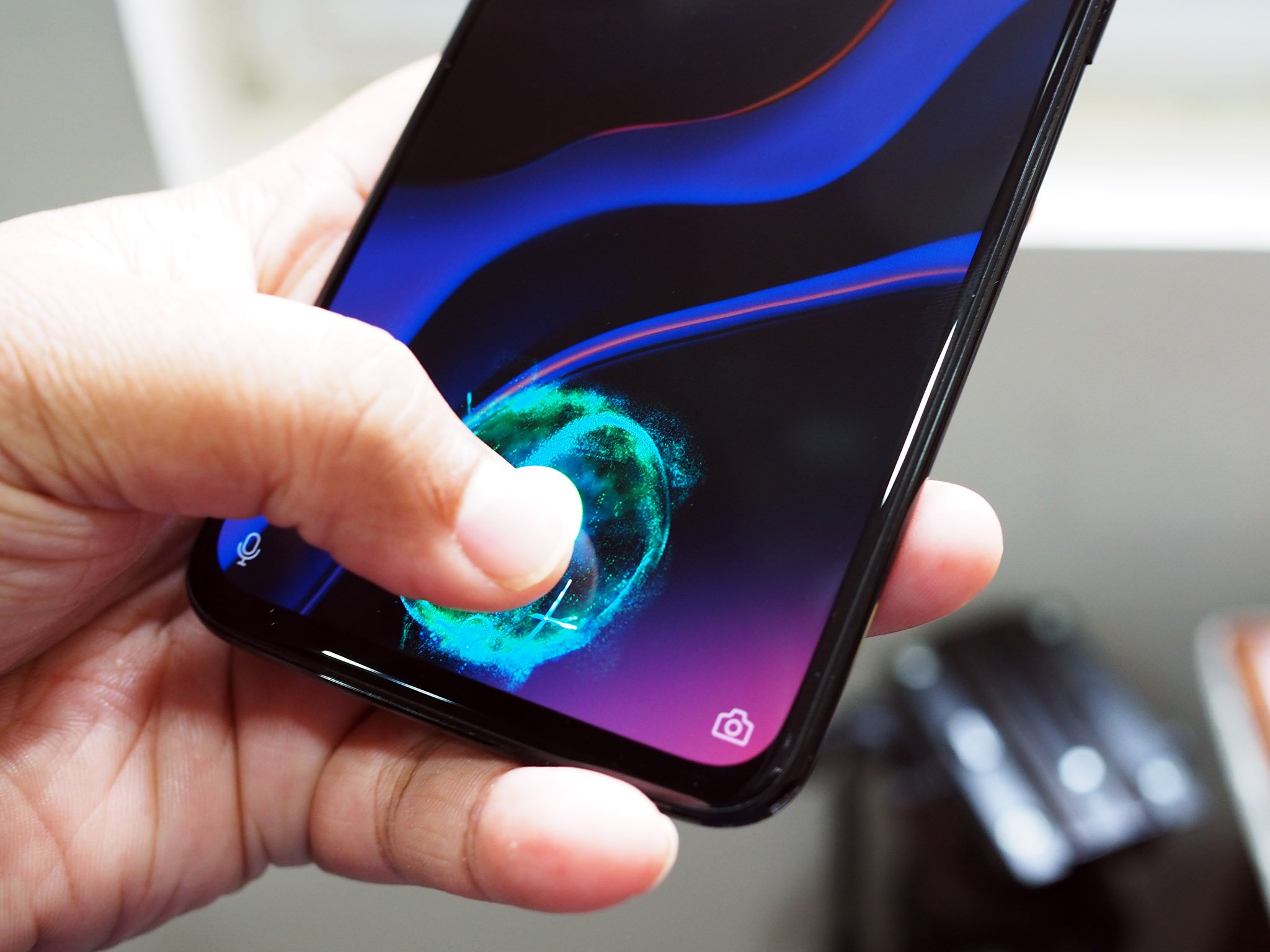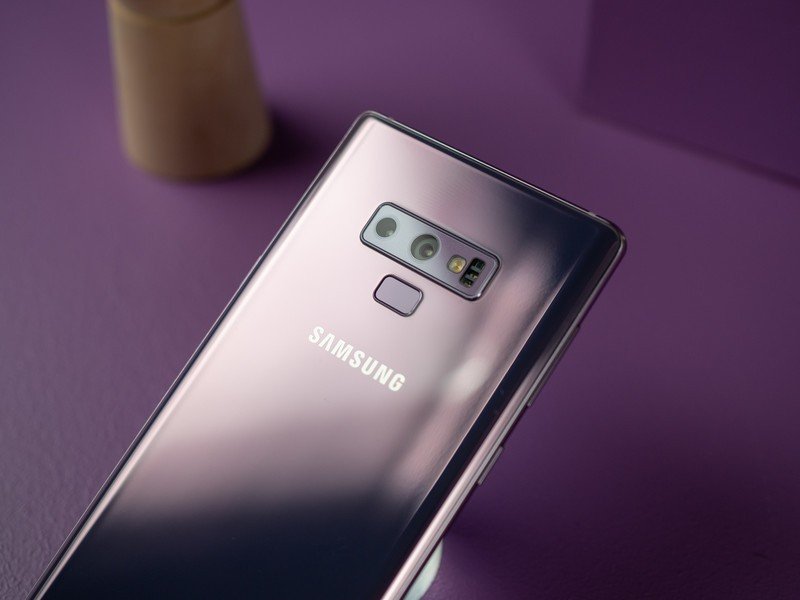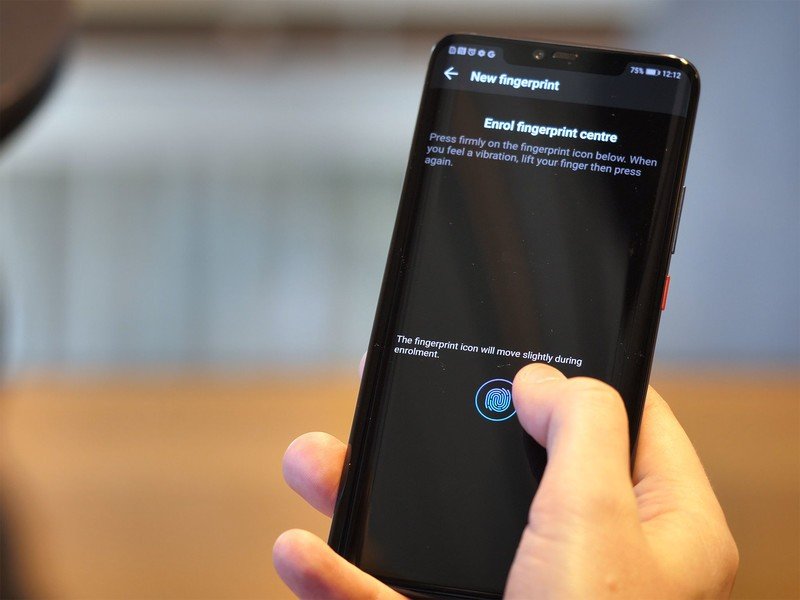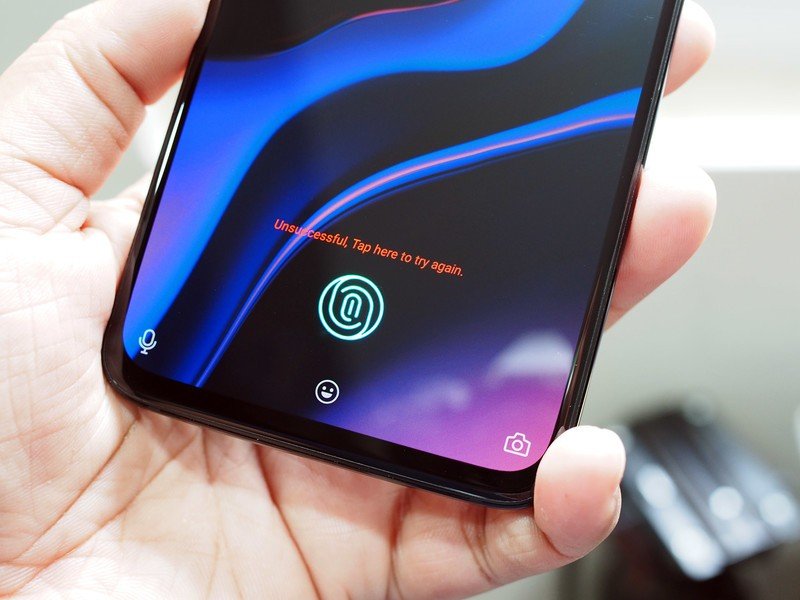In-display fingerprint sensors and cold weather could mean problems

It's the time of year in the northern hemisphere where things can go from warm and delightful to chilly and brisk and that means it's time to hear more about how fingerprint sensors on smartphones are having troubles. It might feel inconvenient, but there is a reason your fingerprint sensor might seem to work a little poorly in cold weather, and this is especially true of in-display fingerprint sensors. It's not a bad reason, though. It's by design.
Cold changes things

We've all probably heard that heat makes things expand and cold makes them contract. Cold air also holds less moisture which can cause something porous, like the tips of your fingers, to get dry and it means you'll spend more time with your hands inside gloves or a pocket where lint and dirt can live. All three of these things are tough for a fingerprint sensor to overcome.
Even a capacitive sensor can have trouble in the cold weather.
Capacitive sensors, like what we see on the Galaxy Note 9 or Pixel 3, have become a lot better than they used to be — the iPhone 5S had a great sensor for its day, but the first winter after its release saw a flood of complaints. On a capacitive sensor electrical capacitors are built in an array that lets it "see" where the whorls and ridges of your fingerprint are because all parts involved conduct electricity. The hardware and software algorithms used have been refined and using a capacitive sensor in the cold can be almost as successful as it is when it's hot, even though the ends of your fingers aren't the same. Engineers are able to compensate for dry cracked skin, shrunken fingertip ridges, and even microscopic bits of lint and dirt from your pockets clinging to those rough and cracked fingerprint whorls.
While you might find the capacitive fingerprint sensor in your Note 9 is a bit less accurate in December than it is in June, the in-display sensor in your OnePlus 6T or Mate 20 Pro has a much larger potential to fail because of the technology being used.
Read between the lines

We've seen a few phones from Vivo, Huawei, and now OnePlus use an in-display fingerprint sensor and so far they all have been optical sensors and built mostly the same way. An optical fingerprint sensor is placed under the OLED layer in the screen, bright light is shined between the individual pixels in the area you're supposed to place your finger, and everything inside that area is scanned. I hesitate to say it's taking a picture of your fingerprint because it's not collecting the data in any way that can be recreated as a drawing or photo — it's building a set of data points based on exactly what it can see whilst scanning.
This data is then placed into a piece of hardware designed to act as a trusted keyholder. An app or the lock screen on your phone can ask for the keys, the keyholder then asks you to scan your finger, and if it matches the keyholder grants access. The single most important feature of this or any other type of biometric security is that it be built so the scanner can't be fooled. That's the important part in all this, and while we like the convenience of scanning the tip of a finger, it's far more important that it only works when it is supposed to work.
Fun fact: The human body shrinks as it cools until it reaches 4°C, then expands as it freezes because it's over two-thirds water.
Now imagine you just got your new OnePlus 6T and are excited to get it set up and start using it. You probably sat down and added some critical apps, signed into a few accounts, and set up a fingerprint or two. That's exactly what we do, too. Getting a new phone is fun. Later, after an hour's jog or a day on the job site, your finger won't unlock your phone. That's not uncommon nor unexpected, and it's happening because your phone doesn't think those are your fingers. Cold fingers shrink (I'll resist the low-hanging fruit here) and get dry, which causes the edges of the raised lines of your fingerprint to change both size and shape and crack and fray.
Get the latest news from Android Central, your trusted companion in the world of Android
While the tech behind capacitive fingerprint sensors has been able to predict and work around most of these issues, optical sensors haven't. Yet. And that's because of what's known as a false positive acceptance rate — the tiny fraction of a percentage that a biometric sensor is wrong and says yes when it should have said no.
No means no

Biometrics are tricky. Ideally, the crossover rate between accepting false readings as positive and true readings as negative is the most important part and that should be well below 0.05% (one in two-thousand). But where the individual biometric challenge is used is very important. Some items, like a safe or an interior door, may be protecting something of high-value and a person who wants access can be required to wait a reasonable amount of time for the data to be collected and processed. Others are the exact opposite. A police officer with a smart gun needs his or her weapon to be ready when it's needed and may not have time to wait for a lengthy challenge, so a biometric lock that has a higher false positive acceptance rate is used as a last line of defense.

Our smartphones fall into the middle. The information inside of them can be quite valuable for some (if this sounds like you, a six-digit PIN is a better option) but for most people, quick access is very important. Companies which make phones need to balance the right amount of security — false readings are not accepted — with the right amount of speed — it doesn't take 15 seconds to unlock your phone. That's tough to do, but a look at the OnePlus 6T shows us that it is possible, even with an in-glass optical sensor. Until we change the data set being entered by presenting a shrunken, dry, cracked and dirty finger that's very different from the comfortable finger we used to set things up initially.
We're impatient and can't be bothered to wait 5 seconds to unlock a phone. The companies making them know this.
OnePlus or Vivo or any other company using in-display fingerprint sensors could send out an update that makes all this go away, but then fooling the sensor with a photo or someone else's finger would be a lot easier. They could also make sure it never happens — even I could build a fingerprint scanner that can never make a match and never work. Getting the balance right is the most difficult part, and as the technology matures and companies that pioneered its use get better at writing the software that operates them, the situation will improve.
In the meantime, why not make a set of "warm, inside hands" fingerprints and a set of cold "outside hands" prints to help things along?

Jerry is an amateur woodworker and struggling shade tree mechanic. There's nothing he can't take apart, but many things he can't reassemble. You'll find him writing and speaking his loud opinion on Android Central and occasionally on Threads.
